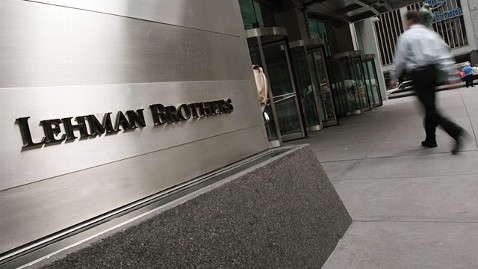FDIC Seeks to End 'Too Big to Fail' Bailouts

(Image credit: Chris Hondros/Getty Images)
The U.S. government has launched a plan to deal with large failed companies that could touch off another Lehman-like disaster, hoping to prevent instability in the financial markets.
The Federal Deposit Insurance Corporation's (FDIC) acting chairman Martin Gruenberg on Thursday outlined steps that the federal financial agency will take to allow the subsidiaries of a failed financial institution operate while taking over a parent company - without a taxpayer bailout in accordance with the Dodd-Frank Act.
In the event of a failing or failed institution, Gruenberg said the FDIC's resolution strategy has three key goals.
"The first is financial stability, ensuring that the failure of the firm does not place the financial system itself at risk," Gruenberg said in his prepared remarks in Chicago at the Federal Reserve Bank of Chicago's Bank Structure Conference. "The second is accountability, ensuring that the investors in the failed firm bear the firm's losses."
James Chessen, chief economist with the American Bankers Association, said Gruenberg and the FDIC sent an "important" message to investors that there is an agency to prepared to deal with a troubled, systemically important institution so disruptions will be minimal but investors will take losses.
"I think it's clearly a message that says that if you're expecting the government to protect your investment in a large financial firm, you should readjust your thinking," Chessen said. "The plan is not to protect you and you should take care in really analyzing the risk of your investment."
The third goal of the FDIC's strategy is "viability" by converting the failed firm through a "receivership process," similar to the manner in which the FDIC converts a failed, federally insured depository institution to another working bank.
Prior to the Dodd-Frank Act, the FDIC's receivership authorities were limited to federally insured banks and thrift institutions, and not complex institutions such as Lehman Bros., whose failure led to the recent financial crisis.
The FDIC's new strategy deals directly with these large financial companies, or "systematically important financial institutions" (SIFI), which critics describe as "too big to fail." Those include a number of the rescued companies during the recent recession, like American International Group Inc. The U.S. government rescued AIG in 2008 with $125 billion in taxpayer money, and this week the Government Accountability Office released an estimate that the government could make a profit of $15.1 billion from the bailout.
The Group of 20's enforcement agency, the Financial Services Board, published a list of about 30 SIFIs in November, which include eight American companies. Those banks face a number of requirements, including submitting a plan by the end of 2012 detailing how their businesses should be spun off if they collapse.
"By definition, these are institutions whose failure could, if not handled effectively, have ripple effects in the economy," Chessen said. 'The goal is to understand how you would resolve that."
Marcus Stanley, policy director of Americans for Financial reform, a public interest coalition in favor of financial reform based in Washington D.C., said there were still unresolved questions about these complex institutions.
"We feel the FDIC needs to take serious steps to reduce the complexity and size of these extremely large banks," he said. "These institutions are many times larger than Lehman Brothers, which crashed the economy."
Gerri Detweiler, consumer finance expert with Credit.com, said she believes there is still resentment from the bailouts.
"I'm not sure this will convince them that taxpayers won't have to help out again if it comes to that," she said.
"Whether the FDIC would be up to this task remains to be seen, but the fact that these firms are required to have something of a disaster plan in place helps," Detweiler said. "That was part of the problem that led to the meltdown - too much focus on rewards and not enough on risks."